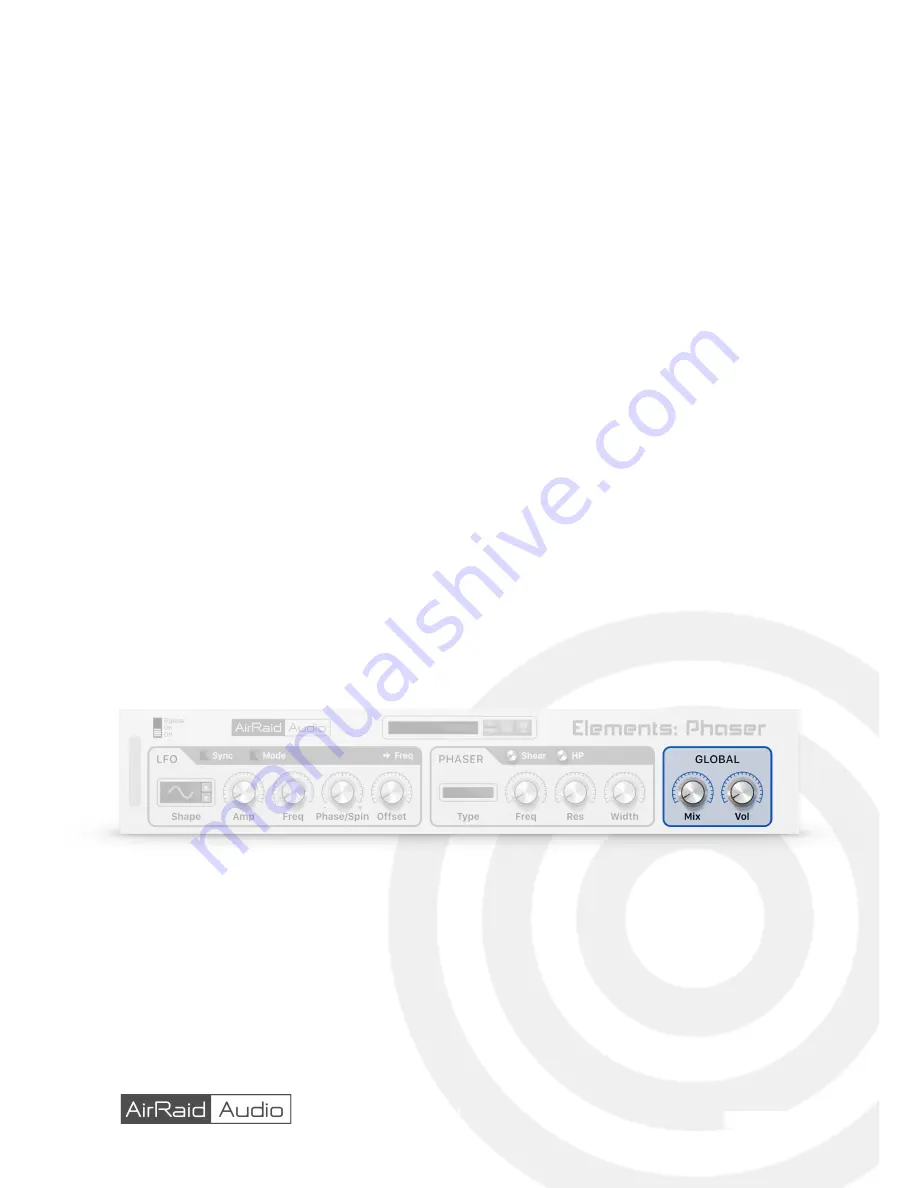
Elements: Phaser
Shear
— Acts as a positive linear (as opposed to exponential) offset for the frequency of each
filter stage. Good for creating atonal, inharmonic sounds.
HP
— Works as a bass filter for the phaser effect. Any frequencies below the cutoff threshold
don’t undergo phasing and are kept dry, before being added back into the signal chain once
the phasing is complete. Value ranges between 10 and 200 Hz.
PHASER TYPES
There are two basic types of phaser on offer: band reject (BR) and band pass (BP).
Band reject types consist of a series of band reject, or notch filters, which preserve much of
the original sound while adding subtle-to-extreme phasing effects, whereas band pass types
consist of a series of band pass filters, which eliminate much of the original dry signal leaving
just the phased sound (which likewise can vary from subtle to extreme.)
Each basic type is available in four different modes: 6-Stage, 10-Stage, 14-Stage and 18-
Stage (where “Stage” refers to the number of BR/BP filters that the sound gets subjected to.)
Effectively, this gives you 8 different phaser modes in total.
We recommend trying each one out at various settings to get a feel for how each one
sounds.
GLOBAL
Mix
—
Controls the dry/wet mix of the device.
Vol
— Controls the volume level of the device’s output, allowing you to either attenuate it or
boost it by up to 6 decibels.
Page of
4
5






